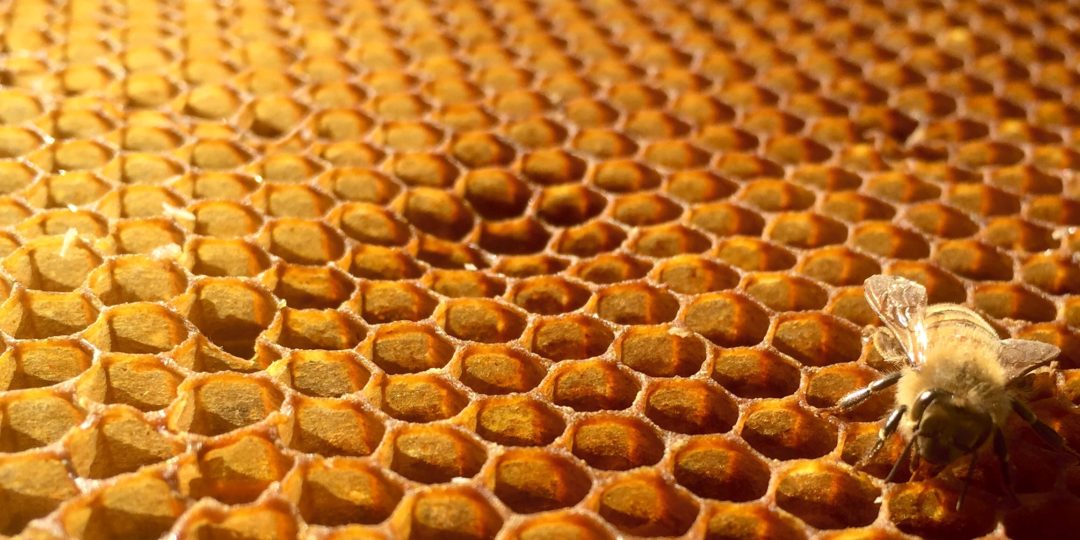Nutrition for Bees: Preserving Honey and Pollen
by Benjamin Ruzzo

Nutrition affects every aspect of an organism’s life, from behavior to evolution. For social insects, such as bees, the gathering and consumption of nutrients can be complex due to changes in the environment and their community. Bees temporarily store and protect some nutrition in their body, but it is mostly stored in the hive. Here, pollen and honey are at risk of microbial degradation and require protection.
Other social insects, including various ant and termite species, use fungi to convert plant matter into a primary food source. Scientists have often debated whether hive-stored pollen is preserved or undergoes a similar nutrient conversion via microbes. Until a study from Kirk E. Anderson et al., there was no answer to this critical question. “Hive-stored pollen of honey bees: many lines of evidence are consistent with pollen preservation, not nutrient conversion” was published in Molecular Ecology in 2014.
Storing Nutrition
Nutrient conversion and food preservation are separate processes, but both involve microbial communities. Preservation environments are usually dominated by acid tolerant microbes. On the other hand, “nutrient conversion involves an extended time component following the collection of plant matter, massive nutrient turnover prior to consumption and a vertically inherited mutualistic microbe or community of microbes that emerges as the dominant force.” In order to understand whether or not hive-stored pollen undergoes nutrient conversion, the researchers conducted a variety of tests and analyses. These focused on various aspects associated with nutrient conversion and preservation. For example, the bacterial abundance in hive-stored pollen, consumption time frame of stored pollen, and bacteria to pollen grain ratio were three variables quantified using bacterial assays, bacterial plate counts and microscopy.
Results
The results from these tests suggested a few things. First, bees prefer to consume pollen that has been stored for less than three days. They also found low bacterial levels in stored pollen, which decrease over time. The bacteria in newly collected pollen and in hive-stored pollen were very similar, suggesting that there are no bacteria that predigest the pollen. This implies that hive-stored pollen is not a good home for most bacteria, so predigestion and nutrient conversion cannot occur. However, two acid resistant microbes were found during the study. Previous studies have shown that these microbes are significant to hive hygiene, food storage, and larval health. Hive-stored pollen has a lot of simple sugars, making it nearly impossible for microbes to exist, creating preservative environment.
Preservation
Preservative environments must be dry and acidic, and have high oxidation-reduction potential. All of these properties are found in honey, which is why it can be stored for so long. These properties of honey may also act together to help preserve pollen. Without pollen preservation, surviving winter would be nearly impossible for bees, and large amounts of food could be lost to microbes. Humans have learned from bees, and adapted these food preservation strategies to increase the odds of survival when food is scarce.
As beekeepers, we reciprocate what we’ve learned from the bees. It is crucial to ensure that a colony has sufficient pollen and honey stores. Knowing that pollen nutrition is not being lost to microbes during the winter months helps us to prepare our hives accordingly, and keep our bees healthy.
If you’re interested in learning more, the full research paper is available online from the National Institute of Health.
Benjamin Ruzzo is a first year beekeeper and student researcher. As a Northeastern University co-op, he works with The Best Bees Company as a field beekeeper, and participates in our research on improving bee health.